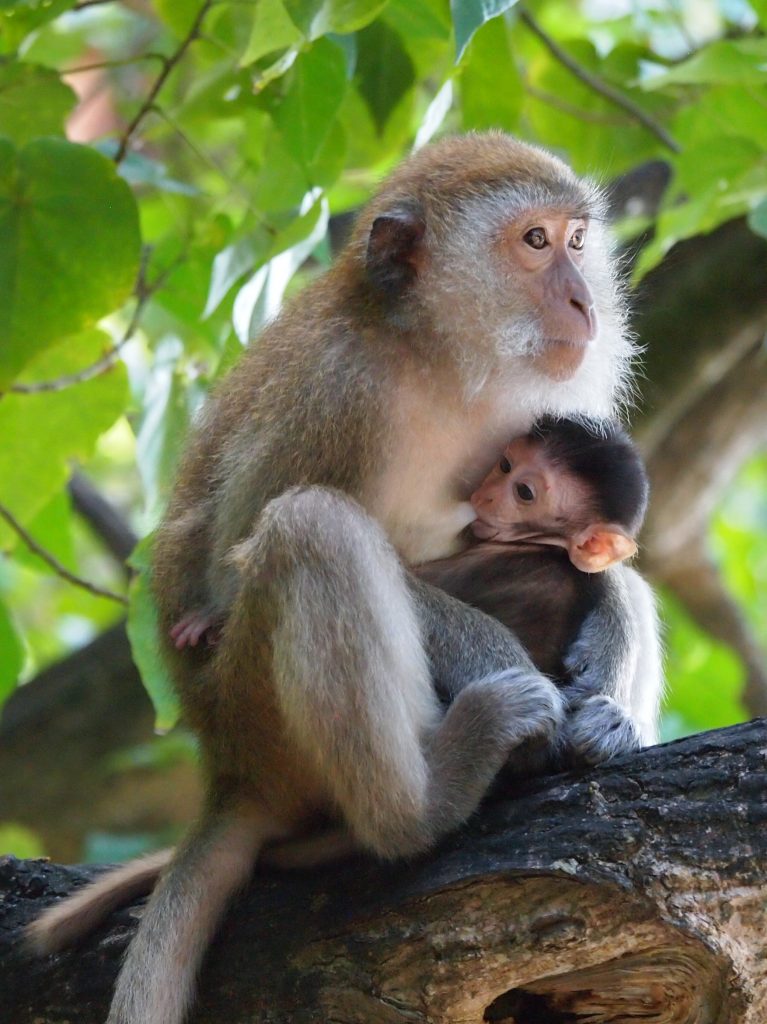Labor Pains and Helpless Infants: Eve or Evolution? (Part 2)
In Part 1 of this post, we discussed two explanations for difficult childbirth and helpless babies: the Fall and the obstetrical dilemma (OD) hypothesis. Both have their weaknesses. Let’s consider another evolutionary-minded explanation, apart from the OD.
For humans, the birth process begins at the same time that pregnancy reaches a critical metabolic threshold. This suggests there is a connection between the two. As a fetus develops and demands more and more from its mother, her body approaches a physiological limit that triggers birth. (Although lactation is also demanding on her body, the mother never surpasses this limit after birth.) This concept has long been described by Peter Ellison’s metabolic crossover hypothesis. My colleagues (including Ellison) and I extended this thinking about a pregnant mother’s metabolic limits to the species level—and to other mammals—in the form of the EGG (energetics of gestation and fetal growth) hypothesis.
Even though constraints remain the leading role in this story, we’re talking about a woman’s metabolic and energetic ceiling, not her pelvic passage (or her moral fiber). This isn’t to ignore the fact that the birth canal is a very real upper limit on fetal size! Of course it is, but it’s not necessarily a uniquely human one, let alone for uniquely human reasons to do with bipedal walking and running, as the OD has it.
As you might expect, the EGG hypothesis has met with some energetic resistance. One common response is that the tight fit at birth between mother’s pelvis and baby’s head is too much of a coincidence to ignore. But other primates, such as macaque and marmoset monkeys, as well as other mammals, have tight fits too. What explains their tight fits at birth? And could those explanations apply to humans? Those questions reflect the spirit of the EGG hypothesis. Additionally, it’s possible that the accelerated metabolism of Homo sapiens, compared to that of other apes, allows pregnant mothers to grow such large babies with such big, metabolically expensive brains.
Another common question I hear in reaction to the EGG hypothesis is, why doesn’t the birth canal get bigger to make childbirth easier? This question, to me, is not a question. Clearly it’s good enough: Billions and billions of humans are evidence of this. It’s possible that childbirth was never as difficult for hominins as it has been for humans since the dawn of agriculture. For many of us in recent history, agriculture has lowered our disease burden and increased our long- and short-term caloric intake, all contributing to our ability to grow big maternal bodies that are metabolically capable of growing big fetuses inside of them, especially in a calorie-rich environment. This could at least partially explain the increase in newborn size over the last few decades reported by U.S. and European hospitals.
However, agriculture has not been paradise for everyone. It has caused an increase in infectious and nutritionally based diseases, and caloric deficits as well. Future mothers who are developing during those terrible circumstances may experience stunted growth, including that of their birth canals. Fetuses and their placental partners are very good at growing up large despite mothers’ conditions, creating potential for a very tight fit at birth, or worse.
Larger babies are associated with longer labors and higher incidences of medical interventions. And this phenomenon has borne out two simultaneous but opposite truths: First, medicine has helped solve some of this evolutionarily recent dilemma, which has been intensified by agriculture. But second, medicine has also helped make childbirth more difficult now than ever before. That is, the direct and indirect fallout from medicalizing childbirth has routinely but unnecessarily complicated successful childbirth. OD-style thinking that medical intervention in childbirth is an “evolutionary imperative” has helped exacerbate this situation, which is much more cultural than evolutionary.
Like obstetrical medicine, the idea of the “obstetrical dilemma” has been a blessing and a curse. It’s been a blessing because it provided a plausible evolutionary explanation for something that we’d long blamed on Eve.
But it’s been a curse too, because it’s so elegant that it has encouraged us to hang on to old anthropocentric and sexist assumptions. It has blinded us to alternative points of view, like EGG thinking. And it’s been used to justify unnecessary obstetrical intervention.
Like obstetrical medicine, the idea of the “obstetrical dilemma” has been a blessing and a curse.
The OD is even such a good evolutionary tale that, in comparison, a friend of mine called the EGG hypothesis unevolutionary—presumably because it’s less about adaptive tradeoffs and human exceptionalism and more about humans working with limited energy budgets and finite metabolic capacities, just like any other primate or any other mammal. But if the EGG hypothesis—a biologically based explanation for the timing of human birth—isn’t about evolution, then what is it about? It’s definitely not about Eve.
Still, Eve’s story sits front and center of the most-read book in history. And no matter what one thinks about its accuracy, it gives certain aspects of the human condition the attention they deserve. Childbirth’s difficulty and the risks to the lives and health of mothers and infants are common to all societies. Inequality increases these risks. Economic, health care, educational, and nutritional inequality contribute to pregnancy- and childbirth-related trauma and mortality all over the world. Gender inequality’s to blame too, and it compounds the other issues. Ironically, Eve’s story does little but encourage us to accept all of this as natural.
Shifting the narrative away from punishment opens up an opportunity for celebration. Imagine all the women who gave birth to big, fat, brainy babies after a relatively long (did I say long?) pregnancy! Imagine all the women who then raised those nongrasping, wobbly-headed, puny-bodied babies despite the years (did I say years?) it takes these particular primates to grow into self-sufficient humans. These women may have only metaphorically kept the world turning, but they’ve literally kept families, lineages, species, and, yes, evolution going. It doesn’t take an evolutionary perspective to see this profoundly beautiful and simple reality, but it helps.


































